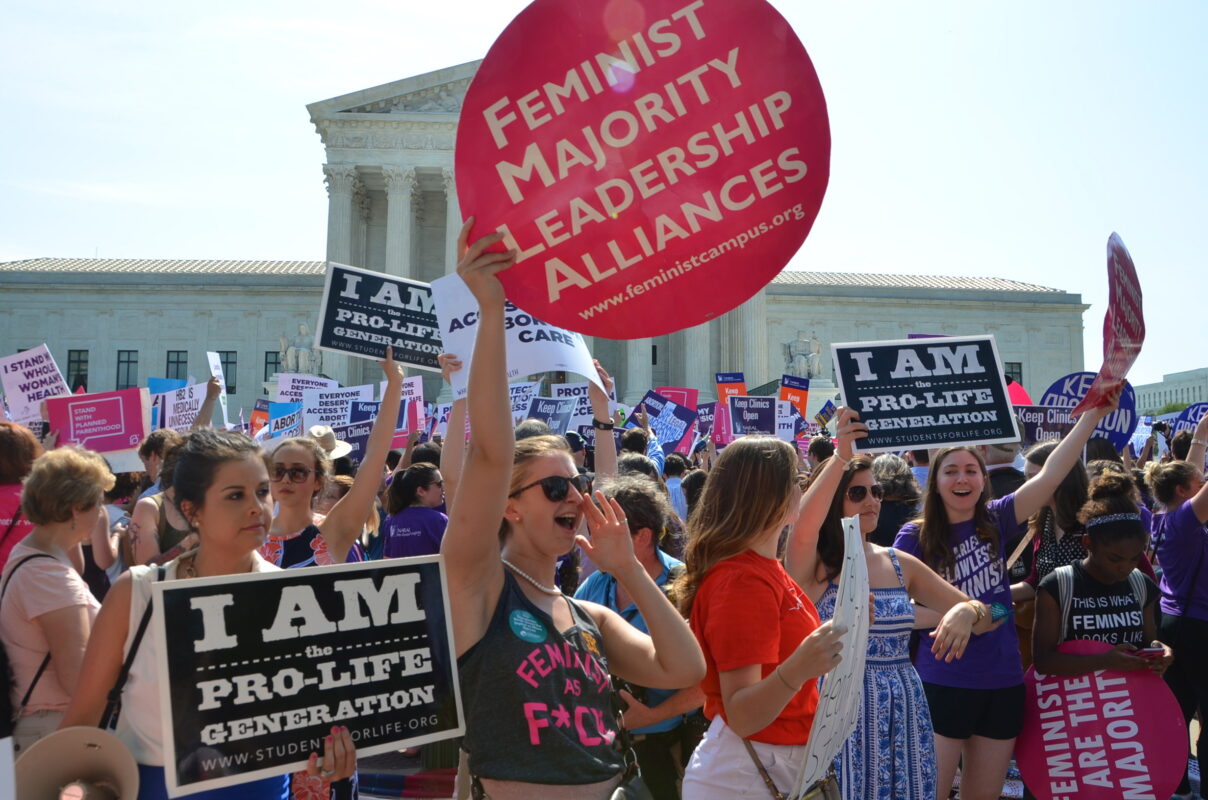The Guttmacher Institute warned at the beginning of March that “states will be the main abortion battleground in 2021,” as legislators had already passed eight restrictions and bans. Two and a half months later, the number of restrictions signed into law has risen to 69 (including 9 bans), across 14 states, with a total of 549 restrictions introduced in 47 states.
Oklahoma, for instance, passed a near-total ban on abortion in April, under which doctors who fail to check for a fetal heartbeat before performing an abortion would be charged with murder. In March, the Texas Senate passed a bill (signed into law today) to ban abortions at six weeks—when most people don’t know they are pregnant—and give literally anyone the right to sue a doctor they believe has violated the ban or any individual who “aids or abets” an abortion. As the Intercept (4/16/21) reported, it’s a strategy designed to stop abortion providers from suing to block the law from taking effect, since they can’t just sue the state as the enforcer of the law. Several states are moving to restrict medication abortion and impose further burdensome restrictions on abortion providers (Guttmacher, 4/30/21).
This campaign should surprise no one: With the confirmation of Amy Coney Barrett in October, the right immediately recognized an opening to push their agenda as far as possible, in the hope that a 6–3 conservative majority on the Supreme Court would soon make previously unthinkable laws a reality. And indeed, the court has just announced it will review a Mississippi law that directly challenges Roe v. Wade.
But you’d be forgiven if you didn’t have a clue this was all brewing—that is, if you rely on some of the nation’s biggest news outlets for your information.
From the beginning of the year through May 16, when the number of restrictions introduced had reached 549, national TV networks had barely mentioned the state-level campaign.
NBC News, where the word “abortion” was only uttered on three segments, didn’t mention the bills a single time in the first four and a half months of the year. ABC mentioned them twice: once in an interview with Arkansas Gov. Asa Hutchinson (3/19/21), who signed into law a bill that bans abortion in all cases except when the life of the pregnant woman is at risk, and once in a feature (3/16/21) about Black perspectives on abortion, which vaguely noted that “challenges to Roe v. Wade are mounting.” CBS ran the most of the broadcast networks with six mentions, five of which were from the same anchor: Anne-Marie Green of CBS Morning News.
Cable news did no better than broadcast: CNN mentioned the state bills only four times and MSNBC five times.
The New York Times mentioned the current state campaigns in the news section of its print edition only a single time—four words in an article about Texas pushing voting rights restrictions (5/9/21)—during the entire time period studied, relegating discussion of the unprecedented attack on reproductive rights to the opinion page. Even when looking more broadly at stories focused on reproductive health policy in general, the paper published more foreign desk stories (11) than domestic news articles (4) through May 16 of this year.
The only attacks on reproductive rights in the world that the paper saw fit to put on its front page came from Venezuela (2/21/21, 4/14/21) and China (5/11/21), not Texas or Oklahoma.
Conservative Times columnist Ross Douthat (4/2/21) managed to write a nearly 2,000-word column about anti-choice strategy without mentioning the current drive by states to ban abortion, instead arguing that “abortion foes actually have good reason to feel unsettled and uncertain rather than triumphant”—despite the fact that they’ve installed a 6–3 majority on the Supreme Court:
It’s extremely easy to imagine the end of Roe leading to a little more state regulation over all (mostly limitations in the second trimester, along the lines of many European countries), but then for the few states that go further to find themselves boycotted and besieged, leaving the goal of ending abortion nationwide as far away as ever.
It’s a disingenuous argument. Ten states already have trigger laws that will ban abortion the moment Roe is overturned. Twenty-two states already have laws on the books that would restrict access further than they already do—and it’s important to remember that in some states, even with Roe on the books, abortion is nearly impossible for most people to access. With the slew of state-level laws coming down the pipe this year, the picture is sure to look even bleaker.
The anti-choice assault goes hand-in-hand with the right’s state-level campaigns against voting rights and transgender rights (the latter of which has also gotten far too little media attention—FAIR.org, 3/12/21).
Republican-dominated states have long pushed restrictive abortion laws that they knew would be immediately halted by the courts; largely ignoring such stunts was not always unreasonable. But these bills are no longer just stunts, and media should have been listening to the alarm bells advocates like Guttmacher have been ringing for months now, recognizing that threats to reproductive rights aren’t only front-page news when they happen in far away lands ruled by official enemies.
